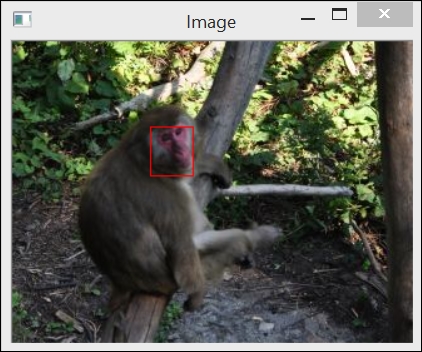The result of a histogram backprojection is a probability map that expresses the probability that a given piece of image content is found at a specific image location. Suppose we now know the approximate location of an object in an image; the probability map can be used to find the exact location of the object. The most probable location will be the one that maximizes this probability inside a given window. Therefore, if we start from an initial location and iteratively move around, it should be possible to find the exact object location. This is what is accomplished by the mean shift algorithm.
Suppose we have identified an object of interest—here, a baboon's face—as shown in the following screenshot (refer to the book's graphics PDF to view this image in color):

This time, we will describe this object by using the hue channel of the HSV color space. This means that we need to convert the image into an HSV one and then extract...

